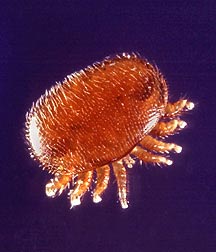Between the end of summer and the beginning of autumn, through hormonal regulation, climatic conditions, environmental parameters and the action of as yet unexplored effects (genetics, pheromones, circadian rhythms, lunar influence, length of daylight...), signals reach the brain of the hatching bees and transform them into long-lived winter bees.

Winter bees have a digestive system that allows them to be enclosed for a very long time, an abundant fat body necessary for their survival during the winter, a haemolymph and hyopharyngeal glands with high proportions of phosphoproteins and very rich in vitellogenin. Vitellogenin is a lipoprotein which is the source of the yolk in which antibodies are made and which has the property of reducing oxidative stress by scavenging free radicals, thereby prolonging the life of worker bees. All this gives this winter bee special qualities and an exceptional lifespan.
Factors influencing the life span of winter bees
In our latitudes, some of the winter bees hatch as early as August, but the majority are born in September. However, when the colony is subject to special conditions, these hatching dates of the winter bees change completely.
Drought
It has been observed that a severe drought in the months of June and July, i.e. without any supply and a break in egg laying, precipitates the production of winter bees. The bee colonies can then produce winter bees already in July or early August. These early births can cause major problems for the survival of the colony: high mortality of these early-born bees is usually observed in December and January.
Pollen

The lifespan of winter bees can be shortened if the colony is not able to rear its winter bees under optimal conditions. Young winter bees need enough good quality pollen in the first days of life to develop their fat body, increase the protein concentration of the haemolymph and achieve a high vitellogenin concentration in the hyopharyngeal glands. Later still, the lifespan of winter bees can be significantly shortened by the need to care for the brood and by the processing of feed sugars.
Pathogens

The lifespan can be negatively influenced by pathogens. It has been observed that in colonies with a heavy infestation of varroa mites, or in colonies suffering from nosema, bees born with the physiology of winter bees were transformed into summer bees due to their disease.

In the absence of varroa mites and pathogens, the numerous summer bees still present in the colonies then naturally generate colonies of at least 10 to 20,000 winter bees with a life expectancy of 160 to 200 days.



